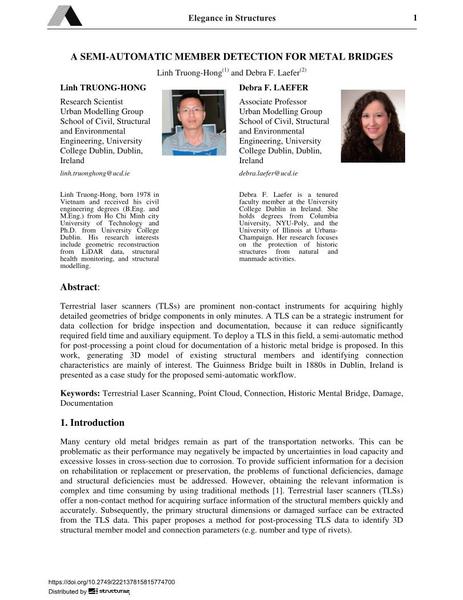A Semi-Automatic Member Detection for Metal Bridges

|
|
|||||||||||
Bibliographic Details
| Author(s): |
Linh Truong-Hong
Debra F. Laefer |
||||
|---|---|---|---|---|---|
| Medium: | conference paper | ||||
| Language(s): | English | ||||
| Conference: | IABSE Conference: Elegance in structures, Nara, Japan, 13-15 May 2015 | ||||
| Published in: | IABSE Conference Nara 2015 | ||||
|
|||||
| Page(s): | 214-215 | ||||
| Total no. of pages: | 7 | ||||
| Year: | 2015 | ||||
| DOI: | 10.2749/222137815815774700 | ||||
| Abstract: |
Terrestrial laser scanners (TLSs) are prominent non-contact instruments for acquiring highly detailed geometries of bridge components in only minutes. A TLS can be a strategic instrument for data collection for bridge inspection and documentation, because it can reduce significantly required field time and auxiliary equipment. To deploy a TLS in this field, a semi-automatic method for post-processing a point cloud for documentation of a historic metal bridge is proposed. In this work, generating 3D model of existing structural members and identifying connection characteristics are mainly of interest. The Guinness Bridge built in 1880s in Dublin, Ireland is presented as a case study for the proposed semi-automatic workflow. |
||||
| Keywords: |
damage connection documentation terrestrial laser scanning point cloud Historic Mental Bridge
|
||||
